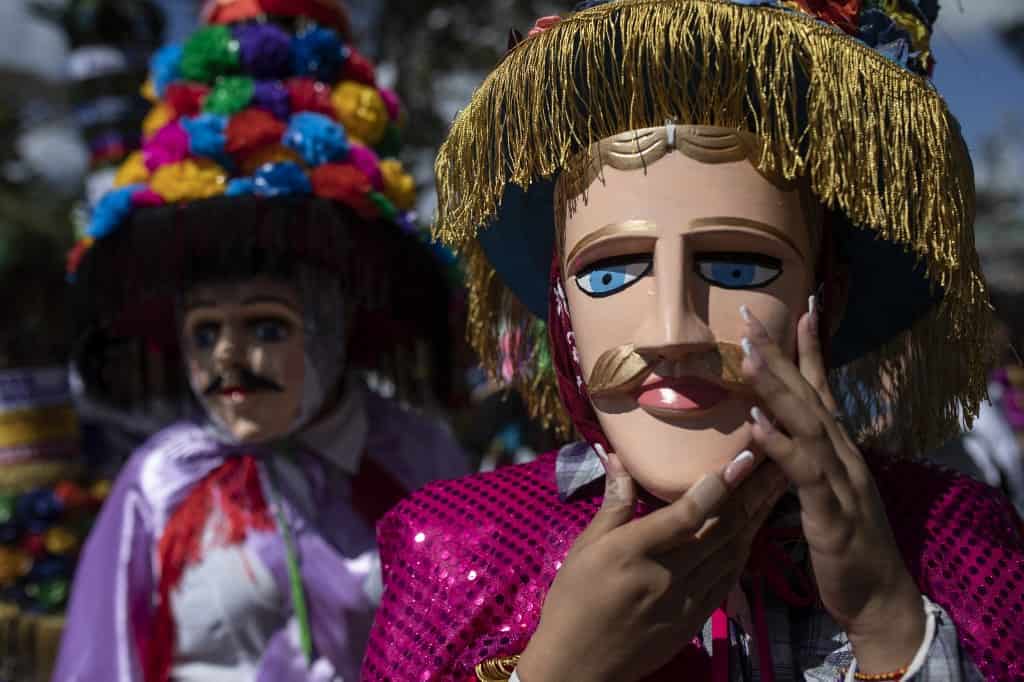With the sound of her violin, Marlen Gutiérrez leads the dance “El Güegüense” in the feast of San Sebastián, in Nicaragua, one of the most distinctive cultural expressions of the colonial era in Latin America, which is still celebrated every year.
To the beat of music, hundreds of the faithful participate in this religious festival, in which they give thanks for miracles or ask to improve their lives with folkloric dances in a procession through the streets of Diriamba, a small agricultural town located 40 km south of Managua, oblivious to the daily complications of the country.
“It [the festival] has a lot of significance, because there we see syncretism, where we see indigenism fused with Spanish culture […]. It is the expression of Nicaraguan identity,” Gutiérrez explains to AFP.
“Regardless of the time, the moment in which one is living, El Güegüense always represents the voice of the people,” adds the 47-year-old violinist.
The celebration begins in the morning at the Church of San Sebastián, a centenary temple of white walls, with a mass in charge of the parish priest César Castillo.
Then begins the parade of dance groups that with colorful costumes, marimba music and firecracker detonations enliven the procession that carries an image of San Sebastian, the patron saint of Diriamba.
In this celebration, which takes place on January 19 and 20 each year, the young dancers also carry wooden masks that represent the interaction between the Spanish colonizers and the colonized indigenous people.
In El Güegüense the dominated Indians outwardly accept their submission to authority, but behind the masks they elaborate ruses to undermine it.
“With regard to the Güegüense and Nicaraguan culture, there is all that satire, that good humor and that mischievousness that has in this case how the Güegüense arose, to make fun a little of the dominance of the Spanish,” Castillo, the parish priest, told AFP.
“The indigenous does and mocks the dominance of Spanish. It is retaken here in a religious key and we maintain that tradition”, adds the priest.
Expression of protest
The name El Güegüense derives from Nahuatl, the language in which the celebration was originally presented to the colonial authorities.
The dances “El Toro Huaco” and “El Viejo y la Vieja” (The Old Man and the Old Woman) also stand out because of their hustle and bustle.
Wearing a typical dress, a wooden mask with the expression of an old woman and a hat with flowers, the young Keller Arcia moves her hips sensually to the beat of the marimba. Her dance partner wears a costume and a mask that simulates an elderly man.
This 24-year-old woman indicates that she has been dancing “El Viejo y la Vieja” for six years to give thanks “for favors received, because for a year he [San Sebastian] takes care of us and gives us his love, his support and a great faith that accompanies us.”
“In these times we ask our Lord, especially our Heavenly Father and our martyr Saint Sebastian, to free us from all the plagues, to do justice and that thanks to the love he gives us we can become a better country, with a better life, with better faith and love for our culture,” said Arcia.
For the United Nations Educational, Scientific and Cultural Organization (Unesco), El Güegüense is “a virulent expression of protest against colonial rule”.
It is also “one of the most distinctive expressions of Latin America’s colonial era,” notes Unesco on its website, which included El Güegüense in the list of Intangible Heritage of Humanity in 2005.
On their knees
Some of the faithful fulfill their promises in a different way, like Carlos González, who advanced on his knees some 200 meters in the procession, amidst the noise, the dancers and the music, the shouts of the attendees and the bursts of handmade firecrackers.
Gonzalez says he turned to San Sebastian to have children after doctors told him and his wife that they would not have children.
“Fourteen years ago I asked his intercession before our Lord so that we could have children because we couldn’t,” said the 42-year-old.
“I decided to devote myself to our Lord and asking for his holy intercession before him. And I have Sarah, Rodolfo and Karla. After we could not have, now we have three children,” he adds gratefully.







